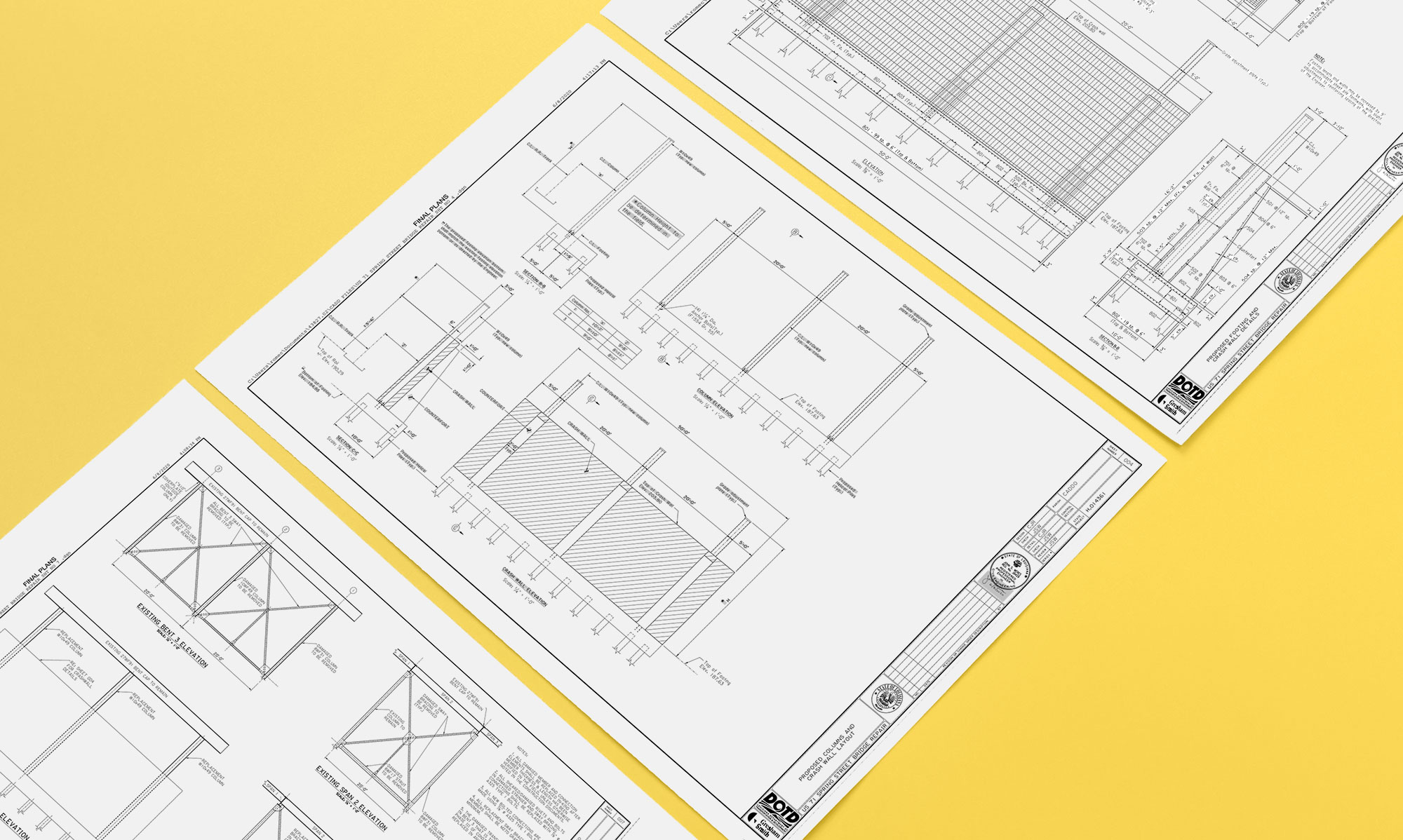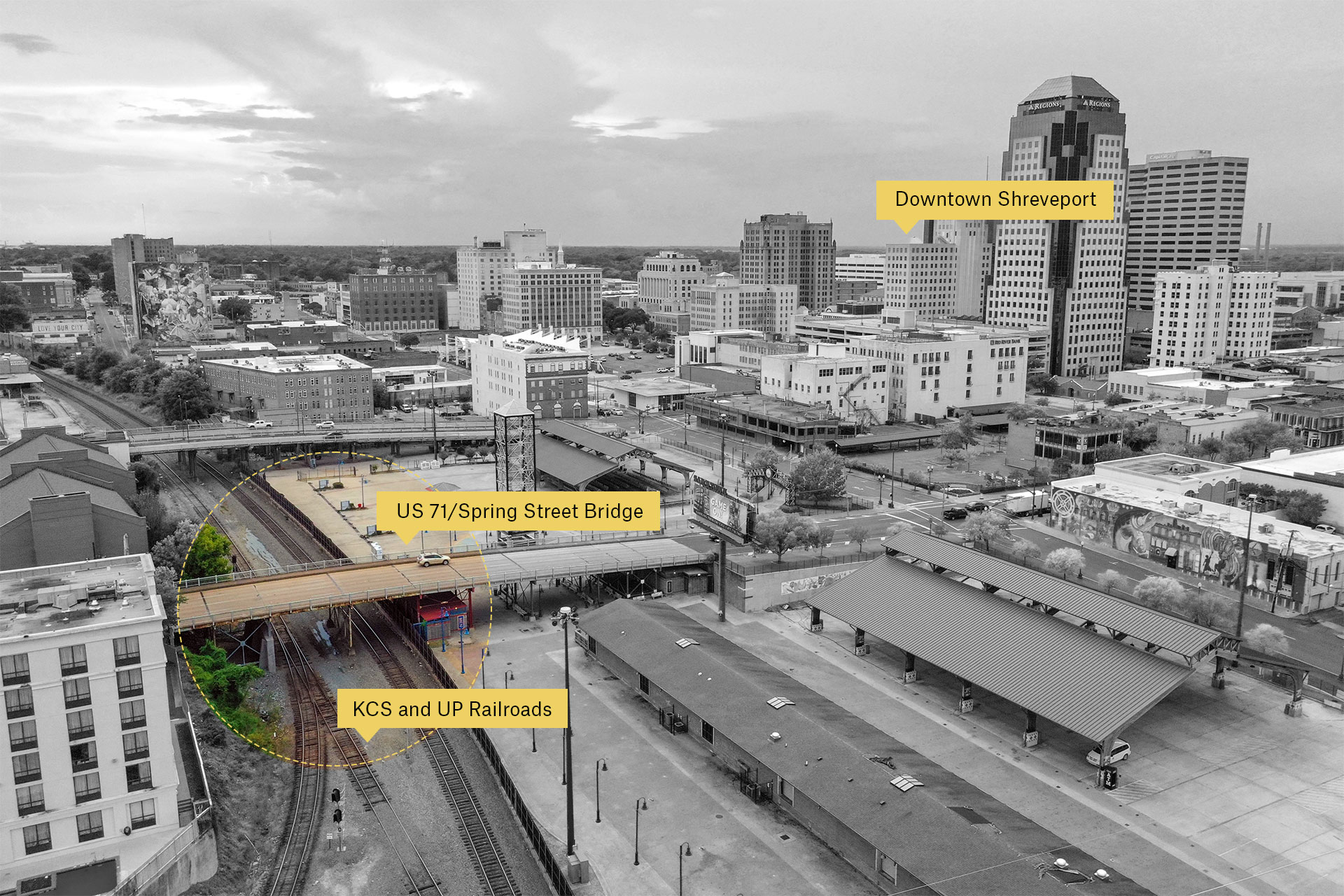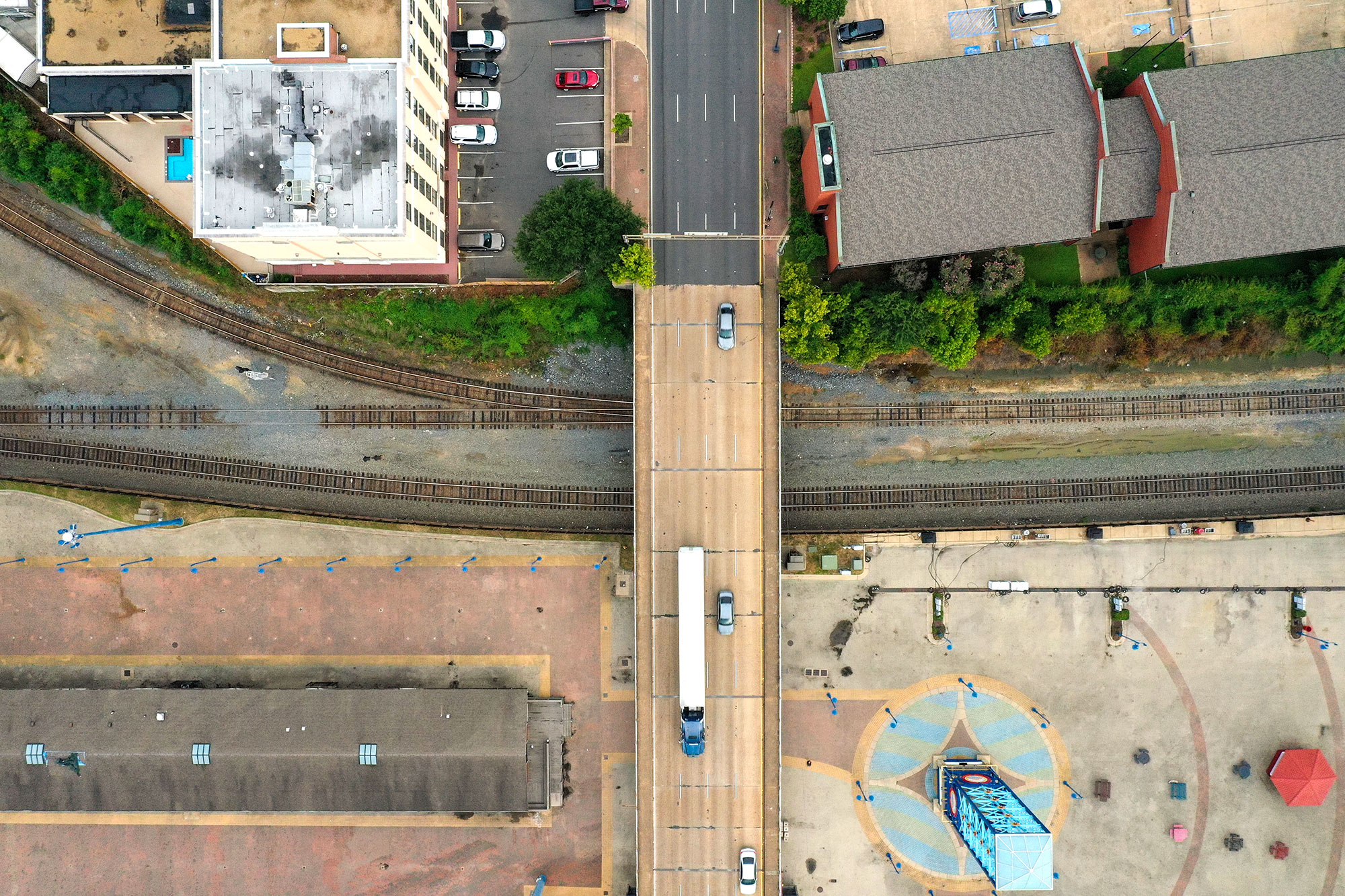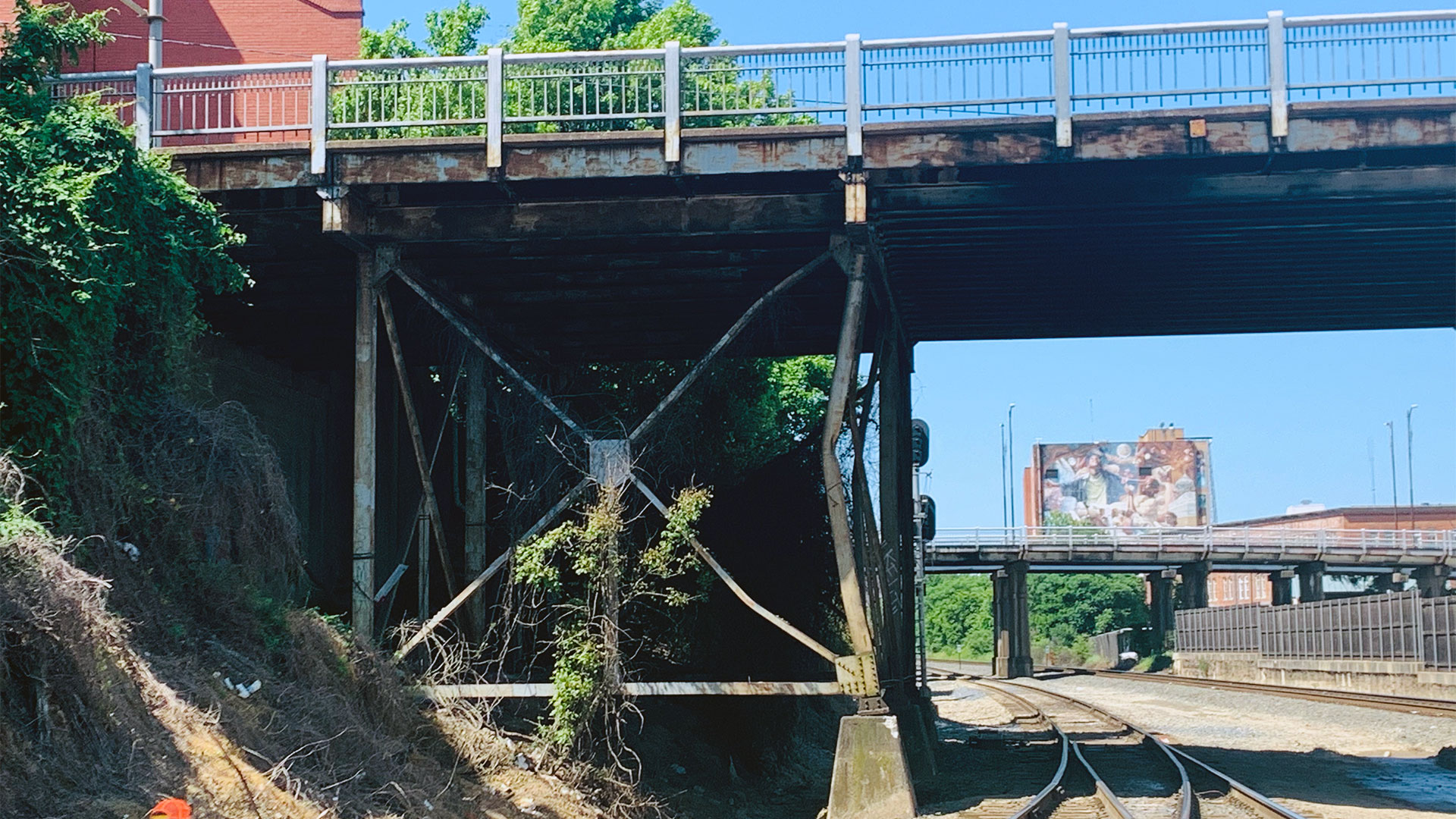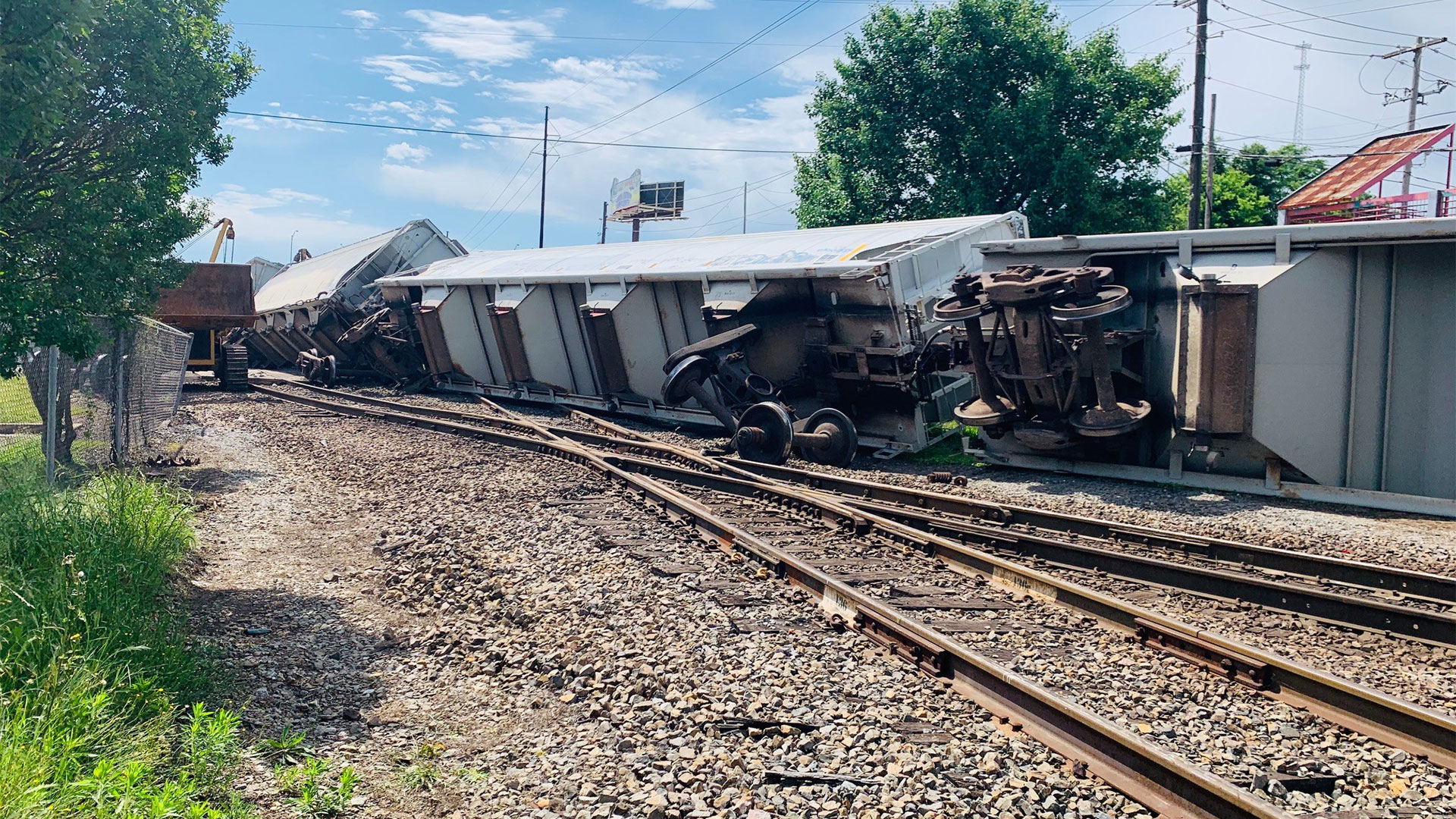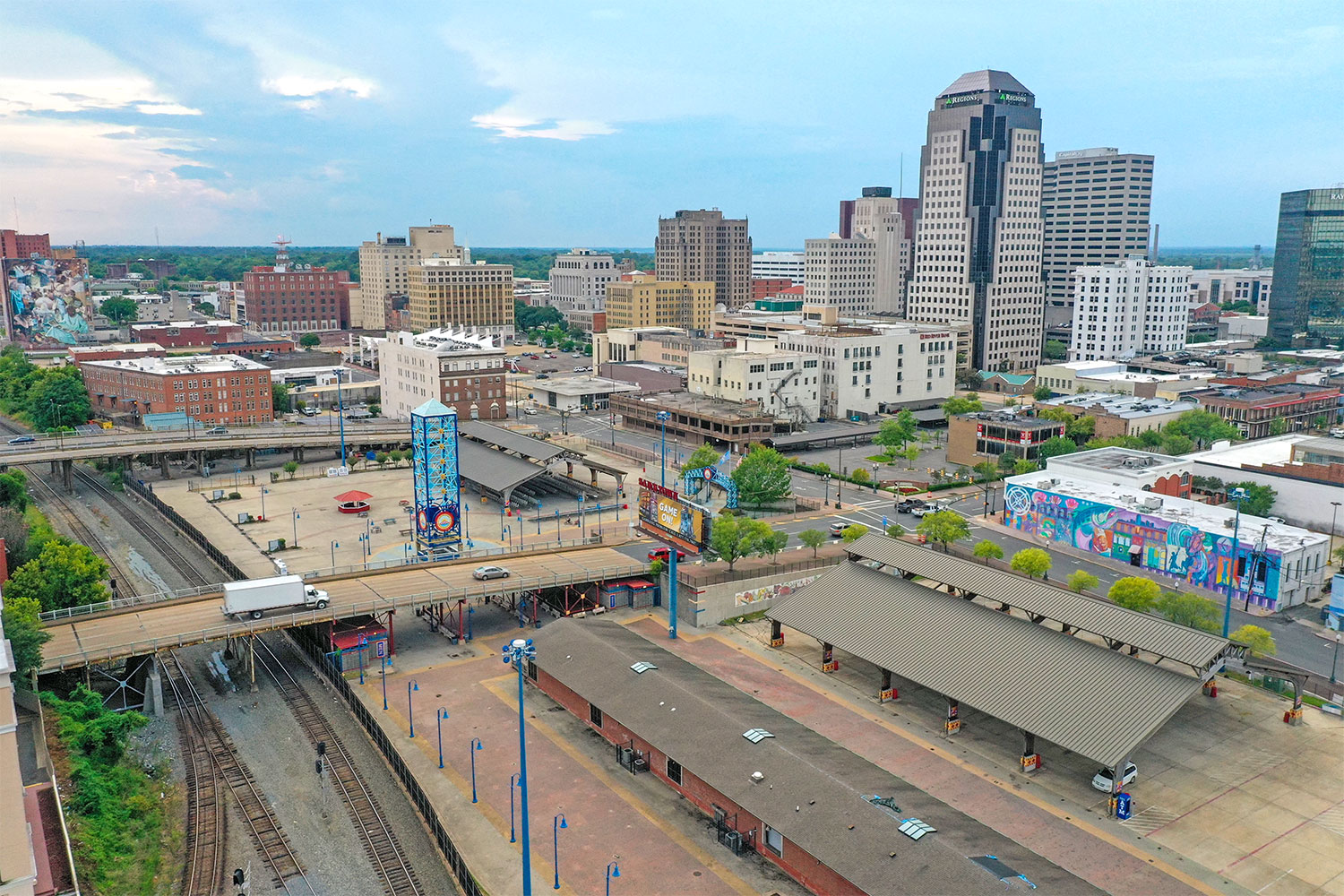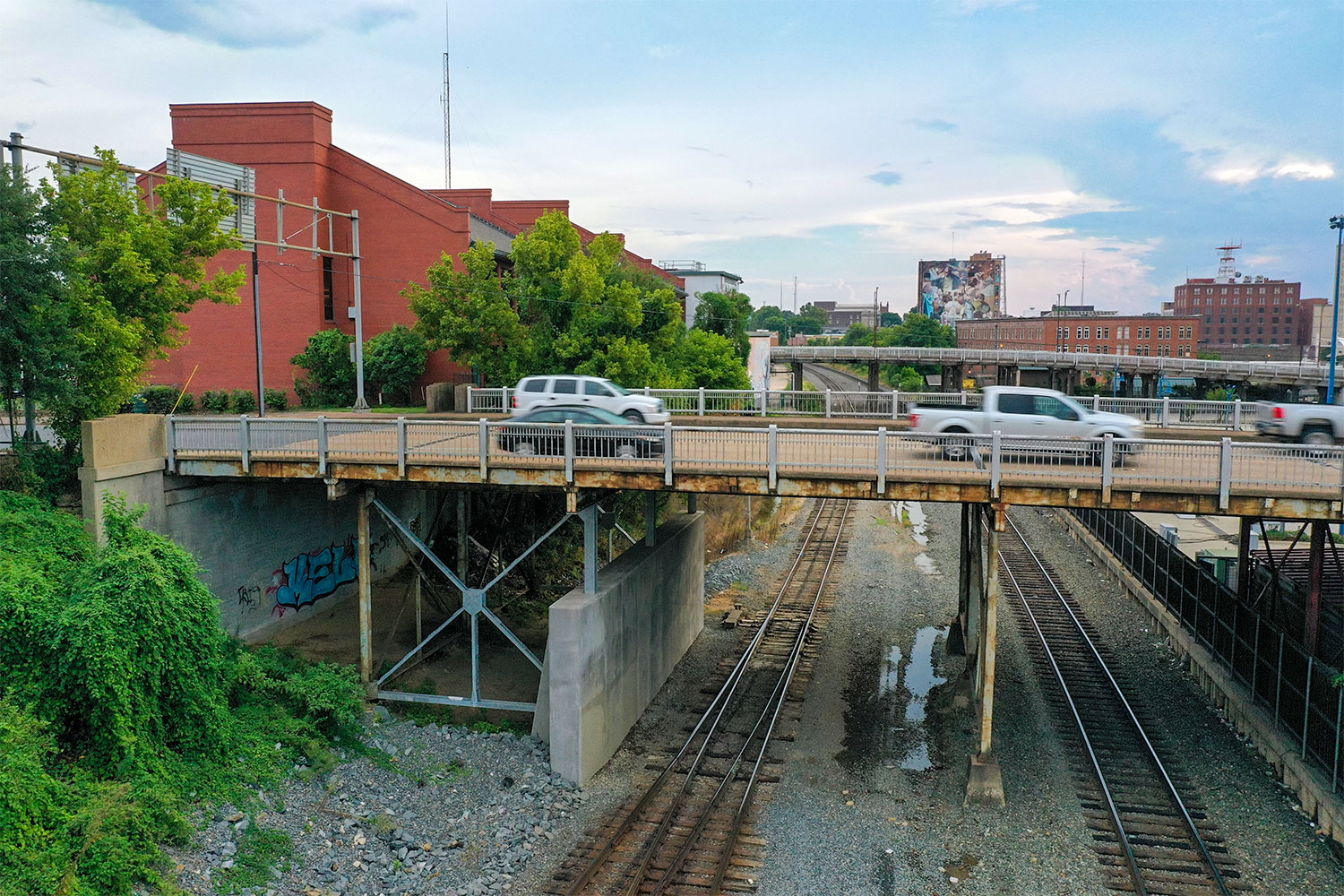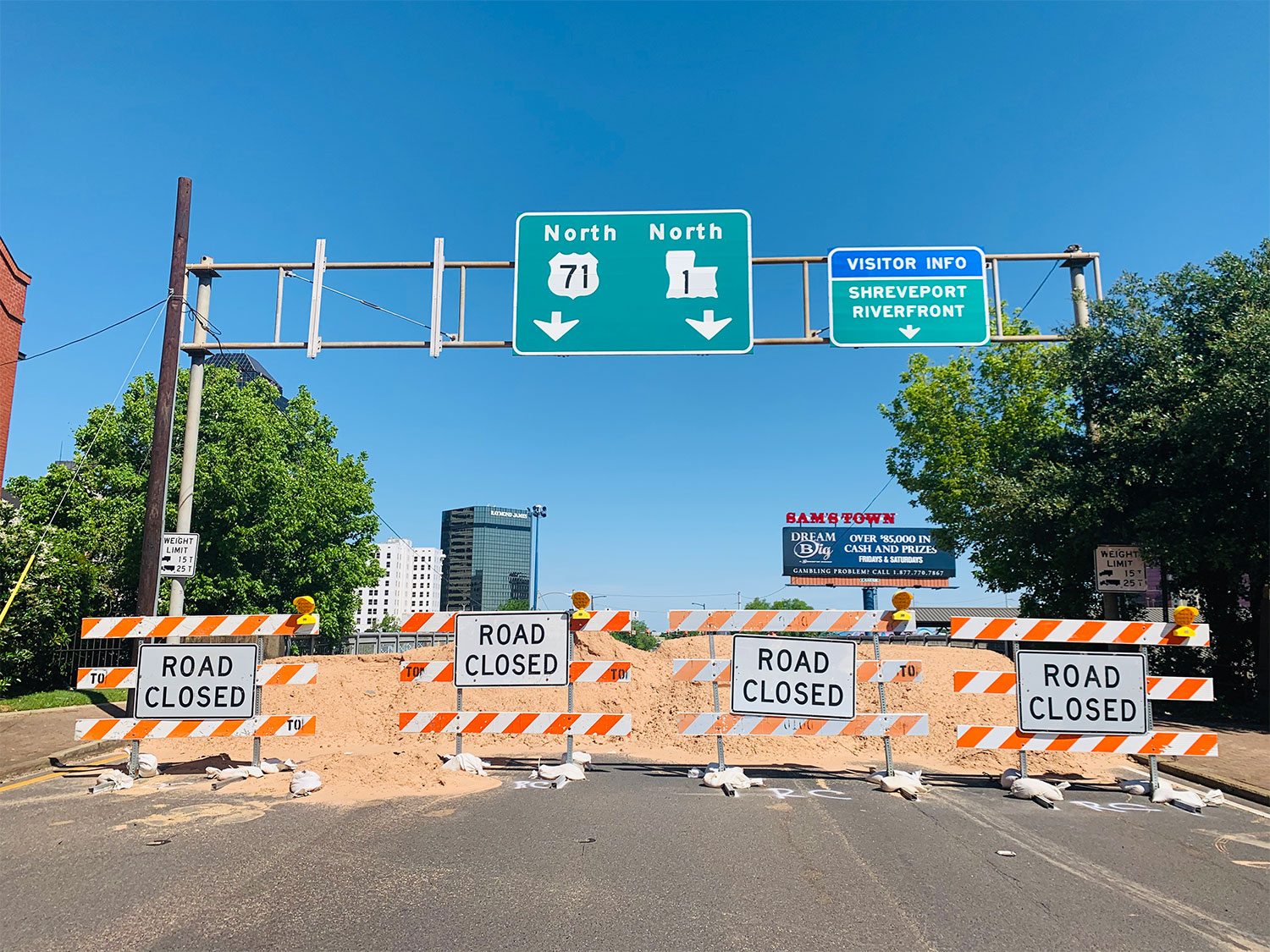On the morning of April 24, 2020, a Union Pacific train derailed in Shreveport, Louisiana, causing extensive damage to the historic Spring Street Bridge and its critical northbound overpass that carries an average of 47,000 vehicles a day in downtown Shreveport. The derailment resulted in an emergency closure and detour of this primary route. In a race against time to get the bridge reopened to traffic, Louisiana Department of Transportation and Development (DOTD) quickly issued an emergency task order for Gresham Smith to conduct complex bridge inspections and repairs. Within two days of the derailment, our Baton Rouge office’s bridge team was on-site.
Following a cursory inspection of the historic structure, our team immediately began preparing design plans to replace an integral, load-carrying steel bent that was damaged beyond repair, and to add a concrete crash wall to protect the bridge from future train derailments. Gresham Smith worked hand-in-hand with general contractor C.E.C., Inc. to have the heavily traveled bridge reopened within just four months—eight months faster than your more typical bridge design and repair project.
year-old overpass
bent damaged beyond repair
months faster than typical bridge repair project
to a bent under the historic Spring Street Bridge.
Coming up with a Plan
To meet state and federal requirements, obtain railroad concurrence with the design, and facilitate design, Gresham smith developed a combination of plans, including conventional design plans, phasing plans and shop drawings. The phasing plans were developed to verify clearances for the railroad.
An Innovative Application
Supporting the historic bridge structure while the damaged bent was removed and replaced required some out-of-the-box, forward-thinking that involved employing a temporary strongback system to support the structure from above the deck.
The design team worked directly with the contractor to develop a system that could be quickly installed utilizing available materials while assuring the structural integrity of the existing bridge before removing the damaged bent. The temporary strongback system included steel beams on the bridge deck, with hangar rods to support the floor beam for the removal and replacement of the existing steel columns.
“Designing and installing the temporary strongback system is an example of true teamwork between our team and the contractor,” notes senior engineer John Weres. “We came up with the general concept for the system, the contractor determined what materials were readily available, we refined the design, the contractor built it—we analyzed it.”
a temporary strong back system was installed.
Up Against the Rails!
All work on the project was performed within the Kansas City Southern (KCS) Railroad right-of-way, which presented some unique challenges for the team.
“The project required extensive coordination and communication between the design team, the contractor, and both KCS and UP railroads,” recalls state Transportation leader Bert Moore. “Not only did we have to adhere to an aggressive schedule because we were under an emergency task order, but we also had to contend with multiple site constraints.
“There’s a large volume of train traffic along that corridor, and we were working up against extremely active railroad tracks in the right-of-way. On any given day, we had 15 to 20 workers on-site. Every time there was a train movement, we had to stop work, move the equipment, and clear the construction workers from the right-of-way. That happened anywhere between five to 15 times a day, which dramatically limited the working time available to complete the repairs.”

“Every time there was a train movement, we had to stop work, move the equipment, and clear the construction workers from the right-of-way. That happened anywhere between five to 15 times a day…”
—Bert Moore, State Transportation Leader
Under the Bridge Downtown
The site constraints also extended to the restricted height clearance between the railroad tracks and the existing bridge structure above. John Wares explains:
“When you’re building a new bridge, you typically build the foundation when there’s nothing above you. Since this overpass was already in place, we had to carry out our repairs underneath the bridge, which involved excavation and building the foundation adjacent to the tracks. To meet this challenge, we used low-clearance torquing equipment to drive the piles.
“Because the new concrete crash wall had to resist an overturned train load, we chose to install the foundations using helical piles—instead of your more traditional piles that are 30 to 40 feet long—which are specifically designed to support heavy loads. Driving standard piles was almost unimaginable in that situation given the disturbance it would have caused, including potential damage to nearby historic buildings.”
using helical piles with low-clearance torquing equipment.
All Aboard!
Once again safe for travel, the US 71 Spring Street overpass was reopened to motorists on August 22, 2020, just four months after the train derailment caused this primary route to shut down to traffic. The new load-carrying steel bent and final crash wall will provide protection for the remaining life of the historic bridge.
“The fact that we were able to turn this project around on such an aggressive schedule boils down to several factors,” notes Moore. “Our ability to complete a complex structure despite major site constraints and the trust that DOTD placed in Gresham Smith to bring a team together, deploy our problem-solving skills and simply get the job done played a huge part. By working closely with the contractor, we were able to develop immediate and innovative solutions that not only met DOTD’s design requirements, but also the requirements of the railroad operators—and that’s a big win-win.”
Project Contact
Our team develops creative solutions for the world's toughest infrastructure problems.
Learn more about our Engineering expertise.

